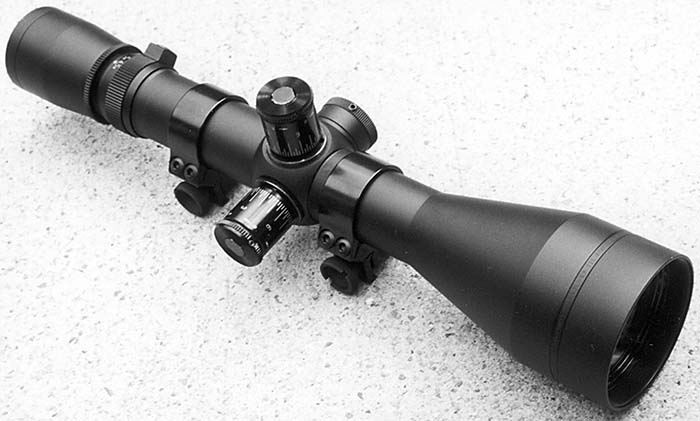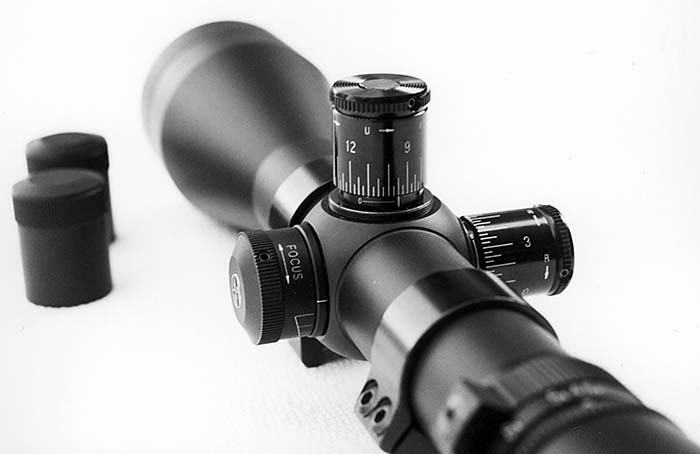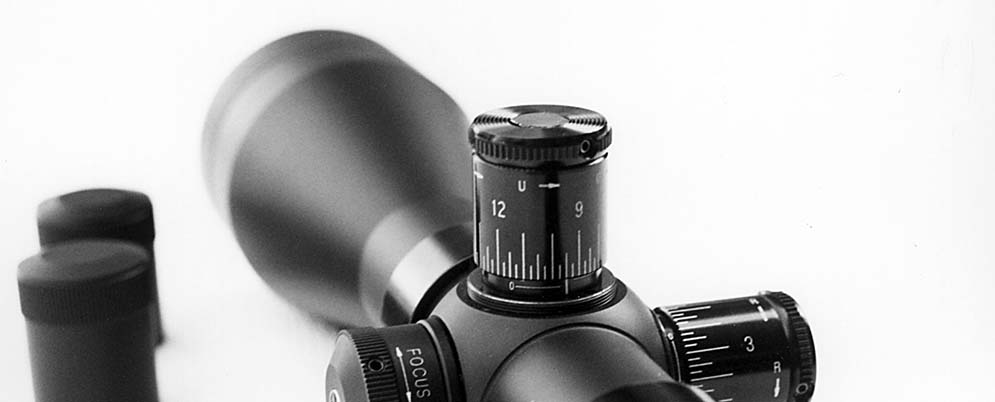By Steve Baugman
Leupold & Stevens has justifiably dominated the precision optics field for some time. Almost all law enforcement and military scopes bear the name Leupold. I recently evaluated one of their pinnacle products, the 4.5-14X50 Long-Range Tactical (LRT). Primarily designed for law enforcement use, it is also an excellent tool for those who are into precision shooting.
It’s hard to put into words what one experiences while evaluating a superior rifle scope. I figured the best way to test one was to go through some training with friends on the Sheriff’s Office Tactical Team. I’ve managed to learn a bit about precision shooting through osmosis since one of my friends is a sniper on the team. I also rely on his instincts related to evaluation of tactical gear. After carefully mounting the Leupold 4.5-14×50 LRT scope on a Remington PSS in .308, I was off to the range for a few days to get a feel as to how the scope performed under typical law enforcement (LE) training scenarios. Our shooting distances ranged from 35 to 200 yards, so the variable power scope was ideal for this range spectrum. For close up work, such as an urban scenario, the 4.5 power is ideal due to its large field of view. When shooting out past 75 yards, the 14.5 power setting is great for precise shot placement.

The LRT was delivered with a 16-page owner’s manual. One of the first manuals I’ve seen delivered with a scope- it was most informative. It covered items such as mounting, sighting in, zeroing the dials, maintenance, and trouble-shooting tips. Most people never read an owner’s manual for anything, much less one for a rifle scope, but this one is worth the read. One item of discussion includes understanding parallax. Parallax is the apparent movement of the target relative to the reticle when you move your eye away (sideways) from the center point of the eyepiece’s exit pupil. At short distances, the parallax effect has virtually no impact on shooting accuracy. Using a 4-power scope at 100 yards, the maximum parallax error would is less than 0.2 inches. For target shooting, varmint hunting and tactical long-range scenarios however, the scope must remain free of parallax. By adjusting for parallax, you actually move the objective lens closer to, or further from, the reticle. This allows the target to be focused precisely on the same plane as the reticle, which equates to optimal accuracy potential for any given distance. Most scopes utilize a rotating objective lens for adjusting the parallax, while the LRT features a simple side-adjustment knob. The knob does not have any distance marks like conventional rotating objectives, but it does have graduated marks for calibrations at different distances.
The scope optics are computer designed to optimize sharpness, resolution, and low-light visibility. All lenses are treated with Multicoat 4 anti-reflective coatings (Leupold proprietary) to reduce light scattering and other reflections. They should be cleaned as carefully as one would a camera lens. The body of the scope is made of 6061-T6 aircraft-grade aluminum alloy. There are no mechanical differences between the standard Vari-X III and the Tactical Vari-X III. The Tactical is matte finished, with target style adjustment knobs, and has a black matte ring in lieu of the traditional Leupold golden colored ring. The larger 50 mm lens allows more light energy to reach the eye in low-light conditions. No lubrication is ever required on any of the parts. The LRT is 100% waterproof, even without the turret caps in place. All Leupold scopes feature a full lifetime guarantee. No warranty card is required and no time limit applies. It can’t get any simpler than that.
The overall length of the scope is 12.1 inches. Optimum eye relief is 4.4 inches at 4.5 power. When set at 14 power, the eye relief drops to 3.6 inches. The scope weighs 17.5 oz. Field of view at 100 yards is 18.9 inches when set at 4.5 power. When set at 14 power, field of view shrinks to 5.9 feet. Leupold’s Mark 4 has some advantages in extreme ruggedness and increased elevation and windage adjustments, but optics quality is essentially the same in the LRT as it is in the Mark 4. The price of the LRT is about half of what a Mark 4 runs. The LRT is provided with a 30 mm tube, which provides increased strength and adjustment ranges for windage and elevation over a conventional 1 inch tube. The increase in windage and elevation is about 20% more than a standard model. This feature helps to compensate for a greater bullet drop in long-range shooting situations. The 30 mm tube does not provide any additional light gathering capability, as this is a function of lens coating and the diameter of the objective. The LRT’s are available with either the Duplex or Mil-Dot reticle pattern.
After using the scope for several weeks I came to a few conclusions. Number one, the quality and clarity of the optics are the major selling point for this scope. Better optics results in decreased eye fatigue and less distortion for long-range shooting. This factor alone really helped to keep eye-strain to a minimum. The easy manipulation of the side focus parallax knob is easier to use than standard objective lens rotation found on other scopes due to its proximity to the shooter. The elevation and windage knobs are easy to see and to use. It may seem like a small detail, but the markings on the dials are easy to read from the shooter’s position. The up (U () and right (R ®) scribe marks are engraved 5 times around the circumference of the appropriate dial. This allows adjustment without having to get close to the dials to see which way to turn them. All of the adjustments can be conveniently reached by the shooter without having to reposition one’s hold on the rifle. These details may not seem like much, but when used in the field, they save a lot of time and energy.
Throughout the training sessions, the elevation adjustment knob was used extensively due to the wide variety of ammunition I was shooting. Once zeroed, the elevation dial has a horizontal scale that informs the shooter the number of revolutions the dial has been turned when used in extreme long-range shooting. The 1/4 minute clicks are positively heard and felt, and can therefore be manipulated in very low light conditions without visually confirming. The LRT incorporates a backlash elimination system, and this allows 100% repeatability from click to click, and back again. This was validated many times during the shooting trials.

Confidence in the quality of anything I test is something that has to be earned in my book, and it is usually earned over a period of time. Careful evaluations require prolonged use in the field, under various tactical scenarios and environmental conditions. My summary here is that the LRT is one great piece of engineering. I believe it sets the industry standard for ruggedness, reliability, and quality in rifle scopes. Leupold’s approach to making scopes is simply stated: “Made right, made here.” They have an absolute lock on the law enforcement scope market, and I can understand why.
Source:
Leupold & Stevens
PO Box 688
Beaverton, OR 97075
503-526-5195
| This article first appeared in Small Arms Review V4N1 (October 2000) |











